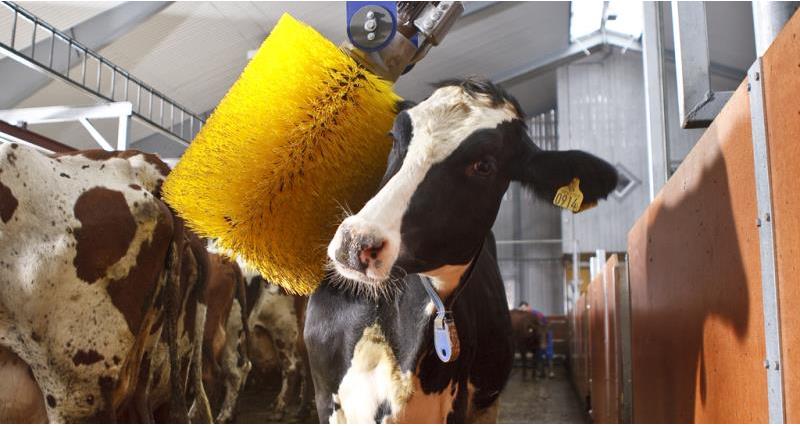He writes:
Much emotion is often mixed with media reports that paint an unrealistic picture of ‘what goes on’ in farming, and we need to be careful not to demonise systems that simply don’t fit our view of how we think things should be done.
We might like to think that the milk in our coffee comes from cows that look like they should be in a butter advert - grazing in a meadow, flicking flies with their tail as a stream babbles through the field behind them - yet just because the reality is often different does not mean the cows’ welfare is any poorer for it.
As in any industry, there are examples of how-not-do-something and it is only right that legislation and robust enforcement is used to bring these transgressors to book. Yet maintaining positive animal health and having optimal welfare conditions on farms allows for efficient production so, to be crude, good animal health and welfare are in farmers’ best interests. The Animal Welfare Acts set the baseline, but we know many producers go well over and above that. Our understanding and knowledge of animal welfare has come a long way since animal welfare needs were first defined over half a century ago.
Modern dairy farming requires close involvement with all aspects of the cows' welfare needs, from the provision of adequate balanced nutrition matched to production, through to her comfort; the surfaces that she walks on, mattresses in cubicles, and spatial requirements within buildings for both loafing/feeding and drinking.
Big does not always equal bad, and often large farming systems are relatively new with significant investment, controlled environments and adequate space. The trick is for the knowledge of the farmer to keep pace with the numbers in the system.
Work is continually being done to improve systems to ensure the UK remains at the forefront of animal welfare.
 Socio-economic advances have been put to great effect. Advances in genetics, for example, have allowed a focus on reproduction so that sexed semen can be used to breed the next generation of milking cows from our very best cows of today, thus reducing the amount of dairy-born bull calves.
Socio-economic advances have been put to great effect. Advances in genetics, for example, have allowed a focus on reproduction so that sexed semen can be used to breed the next generation of milking cows from our very best cows of today, thus reducing the amount of dairy-born bull calves.
Technology has advanced at a huge pace, to the point that a dairy cow is now identified electronically as an individual within the herd and her activity is monitored as she moves about her environment. This not only indicates when it is the optimal time for her to conceive her next calf, but indicates that she might be showing early signs of ill health so that it can be acted upon quickly by farmer and vet. Equally when she is milked by sophisticated equipment that seeks to emulate the natural milking process, we can, at the same time, monitor the quality and conductivity of the milk as an early ‘flag' for signs of disease that can be treated promptly to minimise the negative effects and thus enhance welfare.
Animal health and welfare are inextricably linked, and positive animal health through management is an important part of dairy farming. Farmers, working with their vets and the wider farm team, seek to measure the health of the herd on the farm then create action plans to manage that. Continual monitoring of the health status of the herd is also part of a famer’s and vet’s prerogative. As vets, there’s now a real focus on seeking to put in place preventive strategies that reduce the prevalence and incidence of disease. We all know that with our own health ‘prevention is better than cure’ and this is equally the case with our farmed animals - ensuring good husbandry and health - particularly as we tackle the challenges of antimicrobial resistance (AMR).
There can be a tendency to simply blame vets and/or farmers for perceived mass medication, but the use of antibiotics in agriculture is just one piece of the jigsaw when tackling the global issue of AMR. The UK veterinary profession is committed to responsible use of antibiotics, and it is increased collaboration between human and animal health sectors that will to ensure the positive and necessary steps are taken to preserve these essential drugs for future generations.
Welfare indicators are not always easy to objectively measure and, as a society, we all could and should do much more to understand how agriculture operates – particularly as it increasingly hits our headlines.
